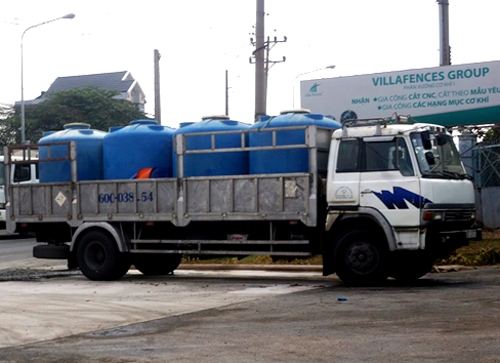Guidelines on the Transportation of Industrial Explosives by Car, Winch, and Cart
Recently, the Ministry of Industry and Trade has issued Circular 32/2019/TT-BCT regarding the National Technical Regulations on safety in the manufacturing, testing, acceptance, storage, transportation, use, and disposal of industrial explosives and the storage of explosive precursors.
To be specific, when transporting industrial explosive materials (VLNCN) by automobile, hoist, cart, or animal-drawn vehicle, it is mandatory to comply with the regulations in Circular 32/2019/TT-BCT as follows:
 ,
,
Illustration (source: internet)
- There must be an escort when transporting VLNCN by automobile, cart, or animal-drawn vehicle. In cases where automobiles travel in a convoy (02 vehicles or more), there must be no fewer than 02 escorts. The first escort must always be in the cabin of the leading vehicle, and the second escort must sit in the cabin of the last vehicle.- The following means are not allowed to transport VLNCN:
- Gasoline-powered automobiles;- Public buses, electric trams;- Electric vehicles transporting electric detonators, differential electric detonators;- Dump trucks;- Trailers pulled by automobiles when transporting detonators, black powder, and types of explosives containing liquid nitro esters;- Hoists used to transport detonators and explosives not belonging to groups 1.4D, 1.5D.
- Stopping and parking must be at least 200 meters away from densely populated areas and important structures. When stopping and parking, engines must be shut off, animals must be detached from the vehicle shafts, and measures must be taken to prevent the vehicle from rolling or sliding.- In the event of encountering a fire on the way to transport VLNCN, the transporting vehicle must stop at least 200 meters away from the fire and 50 meters away from open flames. They may only proceed after the fire is extinguished.- VLNCN must not be transported together with other goods on the same vehicle, except for blasting machines and tools for blasting, which must be placed in boxes and secured to prevent impact with the VLNCN containers.- The maximum speed of vehicles transporting VLNCN and explosive precursors is in accordance with the Road Traffic Law. When traveling on highways, the maximum speed must not exceed 80 km/h.- If transportation vehicles travel in convoys (02 vehicles or more), the distance between the vehicles is regulated as follows:
On flat roads and when stopping:- 10 meters for animal-drawn vehicles;- 20 meters for carts;- 50 meters for automobiles.
When going up or down slopes:- 50 meters for animal-drawn vehicles;- 100 meters for carts;- 300 meters for automobiles.
- The above-mentioned vehicles transporting VLNCN are not allowed to stop or park on sloped roads. In case of an incident on such roads, the wheels must be wedged, and the issue must be resolved immediately.
For cases of transporting industrial explosive materials by rail, waterway, underground rail, monorail in mines, airplane, etc., strict compliance with Circular 32/2019/TT-BCT is also required.
More details can be found in: Circular 32/2019/TT-BCT, effective from July 1, 2020.
Thu Ba
- Number of deputy directors of departments in Vietnam in accordance with Decree 45/2025/ND-CP
- Cases ineligible for pardon in Vietnam in 2025
- Decree 50/2025 amending Decree 151/2017 on the management of public assets in Vietnam
- Circular 07/2025 amending Circular 02/2022 on the Law on Environmental Protection in Vietnam
- Adjustment to the organizational structure of the Ministry of Health of Vietnam: Certain agencies are no longer listed in the organizational structure
- Vietnam aims to welcome 22-23 million international tourists in Vietnam in 2025
-

- Notable new policies of Vietnam effective as of ...
- 16:26, 11/04/2025
-
.Medium.png)
- Notable documents of Vietnam in the previous week ...
- 16:21, 11/04/2025
-
.Medium.png)
- Notable documents of Vietnam in the previous week ...
- 16:11, 02/04/2025
-
.Medium.png)
- Notable new policies of Vietnam to be effective ...
- 16:04, 02/04/2025
-
.Medium.png)
- Notable new policies of Vietnam effective from ...
- 14:51, 21/03/2025
 Article table of contents
Article table of contents
